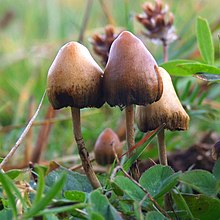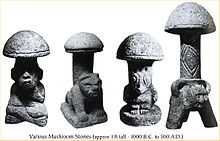Mushrooms are fungi that are so present throughout nature as to be ubiquitous. Underground, out of sight, and in the fecund darkness, they weave a “Wood Wide Web” that forms a communication nexus with the roots of many plants.
“While mushrooms might be the most familiar part of a fungus, most of their bodies are made up of a mass of thin threads, known as a mycelium. We now know that these threads act as a kind of underground internet, linking the roots of different plants.
“The more we learn about these underground networks, the more our ideas about plants have to change. They aren’t just sitting there quietly growing. By linking to the fungal network they can help out their neighbors by sharing nutrients and information — or sabotage unwelcome plants by spreading toxic chemicals through the network.”1

Mushrooms of the magical type, such as psilocybin, are known by the playful name Shrooms. Ingested, the fungi can bring about effects so powerful as to cause epiphanies and visions that are deeply transformational. These effects can sometimes eventuate in such happy feelings that I would suggest that a Shroom may also be known as a FunGuy.
It is also interesting to note that “Long classified as members of the plant kingdom and viewed as originating from degenerate plants that had lost their chloroplasts, mushrooms are now considered a separate kingdom, distinct from the plant and animal kingdoms. Contrary to former belief, the mushrooms have been found by molecular sequencing to be more closely related to animals than to plants.”2
There can be little doubt that a Shroom is not only phenomenal but also a quite robust little funnanimal.3
Some of the peoples in South America were so exalted and exhilarated by Shrooms that they produced a proliferation of little stone statues of the FunGuys. See the image below:

Note
1. The two paragraphs quoted above are from an online article by Nic Fleming. The Wood Wide Web is discussed in Peter Wohlleben’s bestselling book The Hidden Life of Trees. Suzanne Simard, a scientist who has done 30 years of research in Canadian forests, wrote an Afterword to Wohlleben’s book wherein she discusses The Wood Wide Web and the underground social networks of trees.
2. Christian de Duve, Vital Dust, p. 185.
3. On page 244 of Finnegans Wake, James Joyce writes:
“It darkles, (tinct, tint) all this our funnaminal world. Yon marshpond by ruodmark verge is visited by the tide. Alvemmarea! We are circumveiloped by obscuritads.”
HyC